
The Ten Years' War, also known as the Great War and the War of '68, was part of Cuba's fight for independence from Spain. The uprising was led by Cuban-born planters and other wealthy natives. On 10 October 1868, sugar mill owner Carlos Manuel de Céspedes and his followers proclaimed independence, beginning the conflict. This was the first of three liberation wars that Cuba fought against Spain, the other two being the Little War (1879–1880) and the Cuban War of Independence (1895–1898). The final three months of the last conflict escalated with United States involvement, leading to the Spanish–American War.

Lt. General José Antonio de la Caridad Maceo y Grajales was a Cuban general and second-in-command of the Cuban Army of Independence.
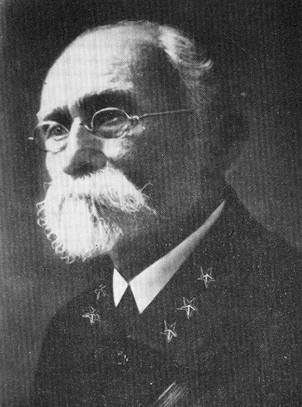
Máximo Gómez y Báez was a Dominican Generalissimo in Cuba's War of Independence (1895–1898). He was known for his controversial scorched-earth policy, which entailed dynamiting passenger trains and torching the Spanish loyalists' property and sugar plantations—including many owned by Americans. He greatly increased the efficacy of the attacks by torturing and killing not only Spanish soldiers, but also Spanish sympathizers and especially Cubans loyal to Spain. By the time the Spanish–American War broke out in April 1898, the rebellion was virtually defeated in most of Western Cuba, with only a few operating pockets in the center and the east. He refused to join forces with the Spanish in fighting off the United States, and he retired to the Quinta de los Molinos, a luxury villa outside of Havana after the war's end formerly used by captains generals as summer residence.

The Cuban War of Independence, also known in Cuba as The Necessary War, fought from 1895 to 1898, was the last of three liberation wars that Cuba fought against Spain, the other two being the Ten Years' War (1868–1878) and the Little War (1879–1880). The final three months of the conflict escalated to become the Spanish–American War, with United States forces being deployed in Cuba, Puerto Rico, and the Philippine Islands against Spain. Historians disagree as to the extent that United States officials were motivated to intervene for humanitarian reasons but agree that yellow journalism exaggerated atrocities attributed to Spanish forces against Cuban civilians.
The military history of Cuba is an aspect of the history of Cuba that spans several hundred years and encompasses the armed actions of Spanish Cuba while it was part of the Spanish Empire and the succeeding Cuban republics.
Adolfo Jiménez Castellanos was a Spanish Governor General of Cuba. On January 1, 1899, he turned Cuba over to the United States.
The First Eastern Campaign was a military campaign that took place between early May and late August 1895 in Oriente Province of Cuba, in the Cuban War of Independence.
The Battle of El Jobito was a military event which took place on May 13 of 1895 in Oriente Province of Cuba, in the Cuban War of Independence.

The Battle of Peralejo was a military confrontation between Cuban independence rebels, under the command of Major General Antonio Maceo against the forces of the Spanish Army, under the command of Captain General Arsenio Martínez Campos, which was part of Maceo's First Eastern Campaign during the Cuban War of Independence.
The Invasion from East to West took place on the island of Cuba, and began on October 22, 1895, in Mangos de Baraguá, in the former province of Oriente. It was organized and directed by Antonio Maceo Grajales and Máximo Gómez. The Liberation Army, guided by the firmness of taking the fight against Spanish colonialism to all corners of Cuba, starred in one of the most relevant events in Cuban history. In the midst of the "Cuban War of Independence", inspired by José Martí, that campaign responded to the old desire of the insurgent generals Maceo and Gómez. These launched the strategy of limiting the liberation struggle to the eastern territory of the Island, but rather extending it throughout the entire Cuban territory to force Spain to fight simultaneously in the six provinces that the country had at that time, in order to weaken it on all fronts.

Francisco Adolfo "Flor" Crombet Tejera was a Cuban patriot and participated in the three independence conflicts. He was appointed head, in commission, of the division of Cuba and Bayamo and was Major General. He landed with Antonio Maceo Grajales for "Duaba". He participated in the Ten Years' War and protested with Maceo in Mangos de Baraguá in defense of the total and definitive independence of Cuba.
The Battle of Iguará was a battle of the Cuban War of Independence which took place on December 13, 1895 in the Santa Clara Province, Cuba.
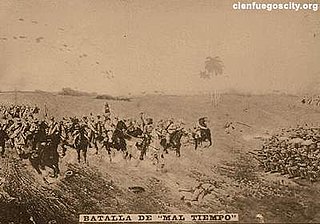
The Battle of Mal Tiempo was a battle of the Cuban War of Independence that took place on December 15, 1895, a few kilometers away from Cruces, Cienfuegos Province. In the battle, Mambises and Spanish forces faced each other, the former being victorious. This victory was considered one of the most important of the Invasion from East to West in Cuba, due to the political, military and economic consequences in favor of the independence activists.
The Battle of Calimete was a battle of the Cuban War of Independence on December 29, 1895, which was led by Cuban independence activists Máximo Gómez, Antonio Maceo and later on, Serafín Sánchez.
The Battle of Las Taironas was a battle of the Cuban War of Independence that took place on January 17, 1896 at Pinar del Río between Cuban forces led by Major General Antonio Maceo and the Spanish led by lieutenant colonel Ulpiano Sanchez Echevarria who was a Cuban native.
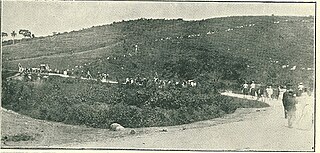
The Lanzadera Campaign was a significant part of the Cuban War of Independence as it was the next operation of the Mambises by Máximo Gómez to distract Spanish troops to him and avoiding their pressure on Antonio Maceo, who was able to continue to the West to complete the Invasion from East to West in Cuba. The campaign was considered to be one of skillful maneuvering, mobility and oversight as Gómez's vastly outnumbered 2,000 Mambises had achieved their goals with negligible losses against the 40,000 Spanish infantry which was commanded by Arsenio Martínez Campos, Sabás Marín and Valeriano Weyler.
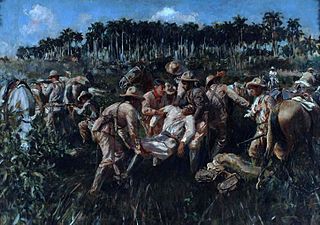
The Battle of San Pedro was a battle of the Cuban War of Independence that took place on December 7, 1896 within the vicinity of the farm of the same name. The battle occurred near the town of Punta Brava on the outskirts of Marianao, La Habana Province.

The La Reforma Campaign was a campaign of the Cuban War of Independence which was waged for 16 months with the Cuban forces under the command of Máximo Gómez against the Spanish forces under the command of Valeriano Weyler. Despite the Spanish outnumbering the Cuban forces by 40,000 to 600, Gómez's guerrilla warfare tactics as well as the weather caused over 40 Spanish soldiers to die each day throughout the campaign. His approach was to divide his forces into tiny guerrilla groups and fight alone with his General Staff while continuously moving.
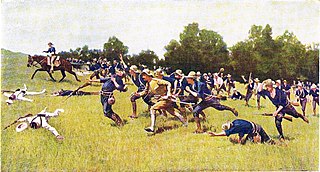
The Second Eastern Campaign was a military campaign that took place between August 1 to 12, 1898, in the Oriente Province of Cuba during the Cuban War of Independence. It was the shortest military campaign of the entire war and it was the one that marked the end of Spanish reign in Cuba and the Spanish Empire in Latin America.
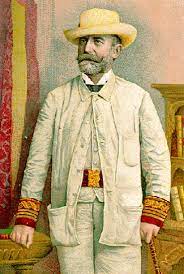
Fidel Alonso de Santocildes was a Spanish Brigadier General and war hero of the Ten Years' War, the Little War and Cuban War of Independence. He was notable for his extensive service during the colonial period of Cuba and was a recipient of the Order of San Fernando. However, he was killed during the Battle of Peralejo, suffering a mortal wound during the battle.











